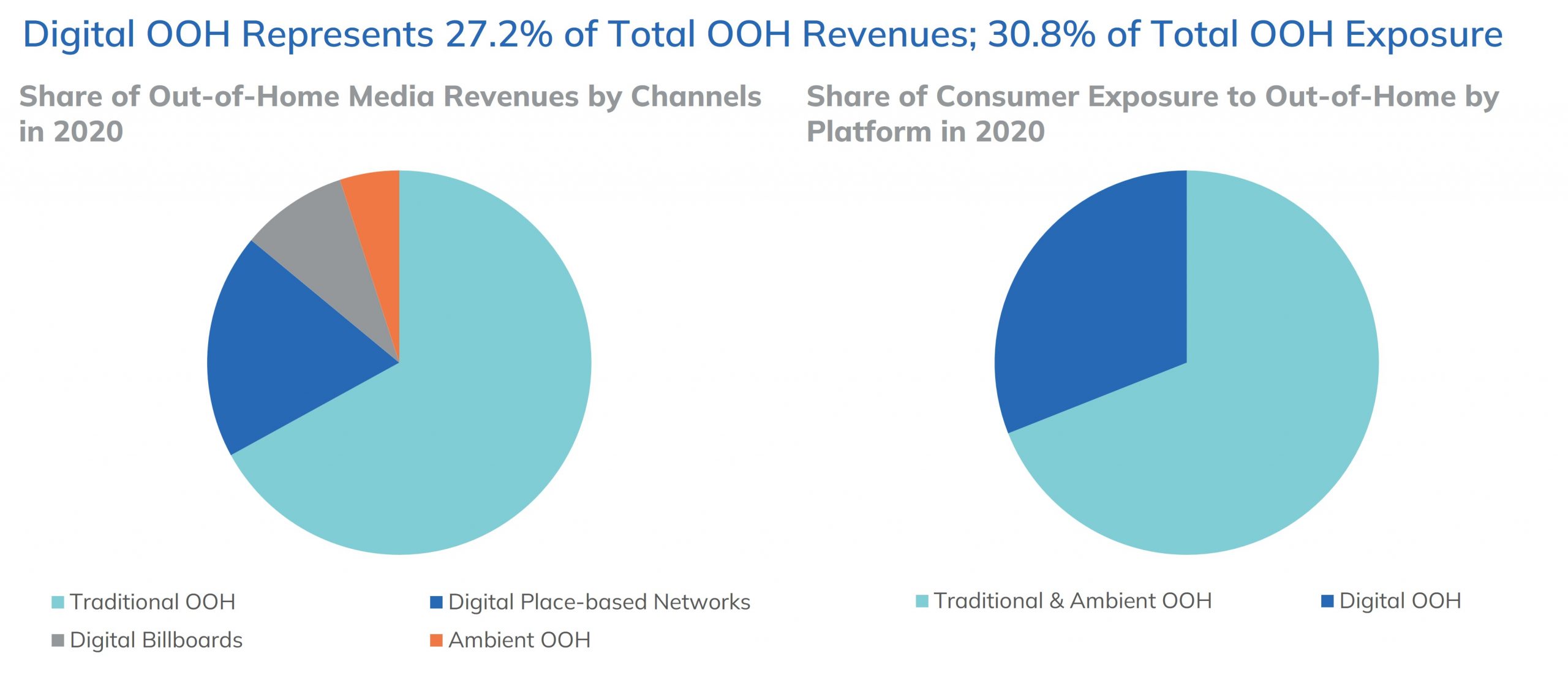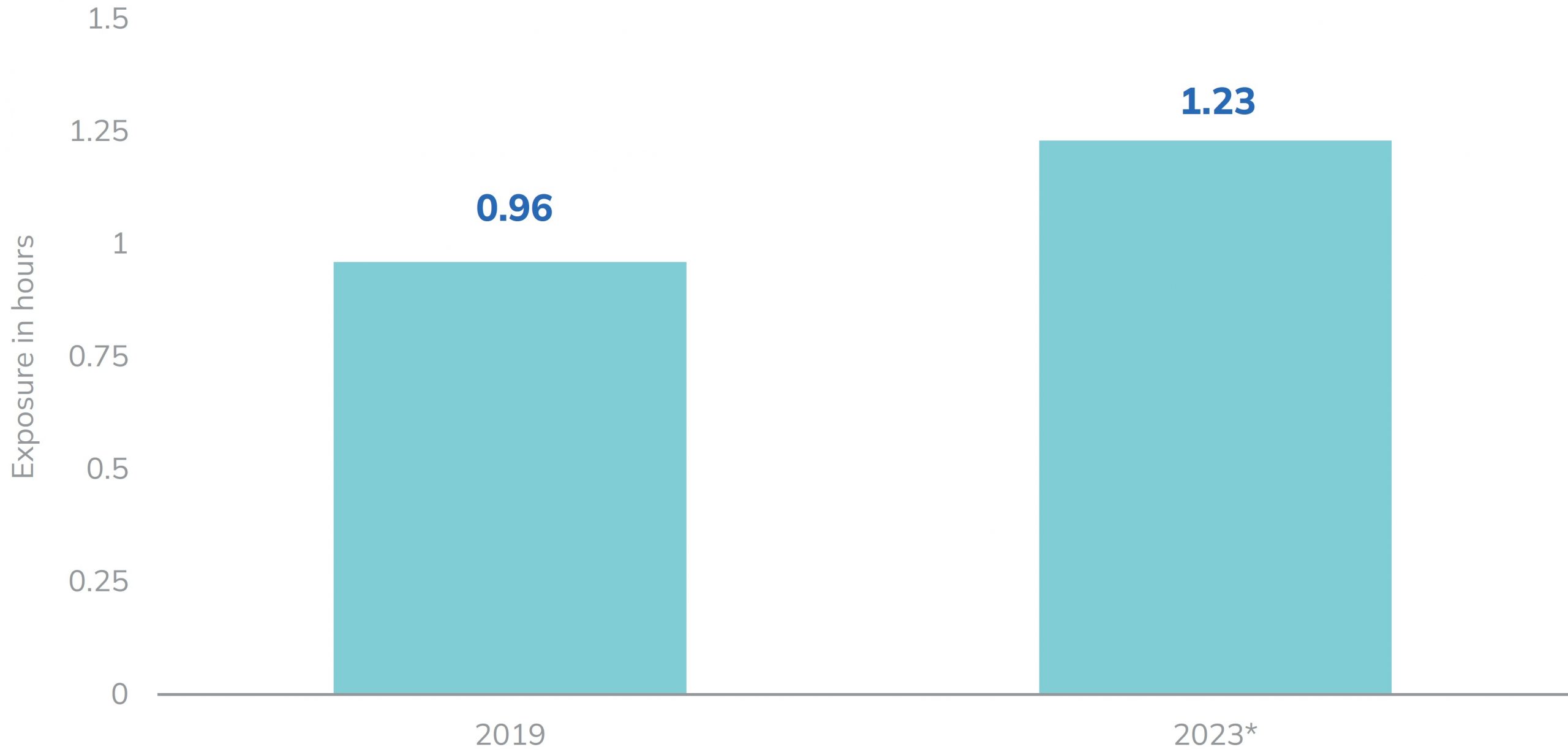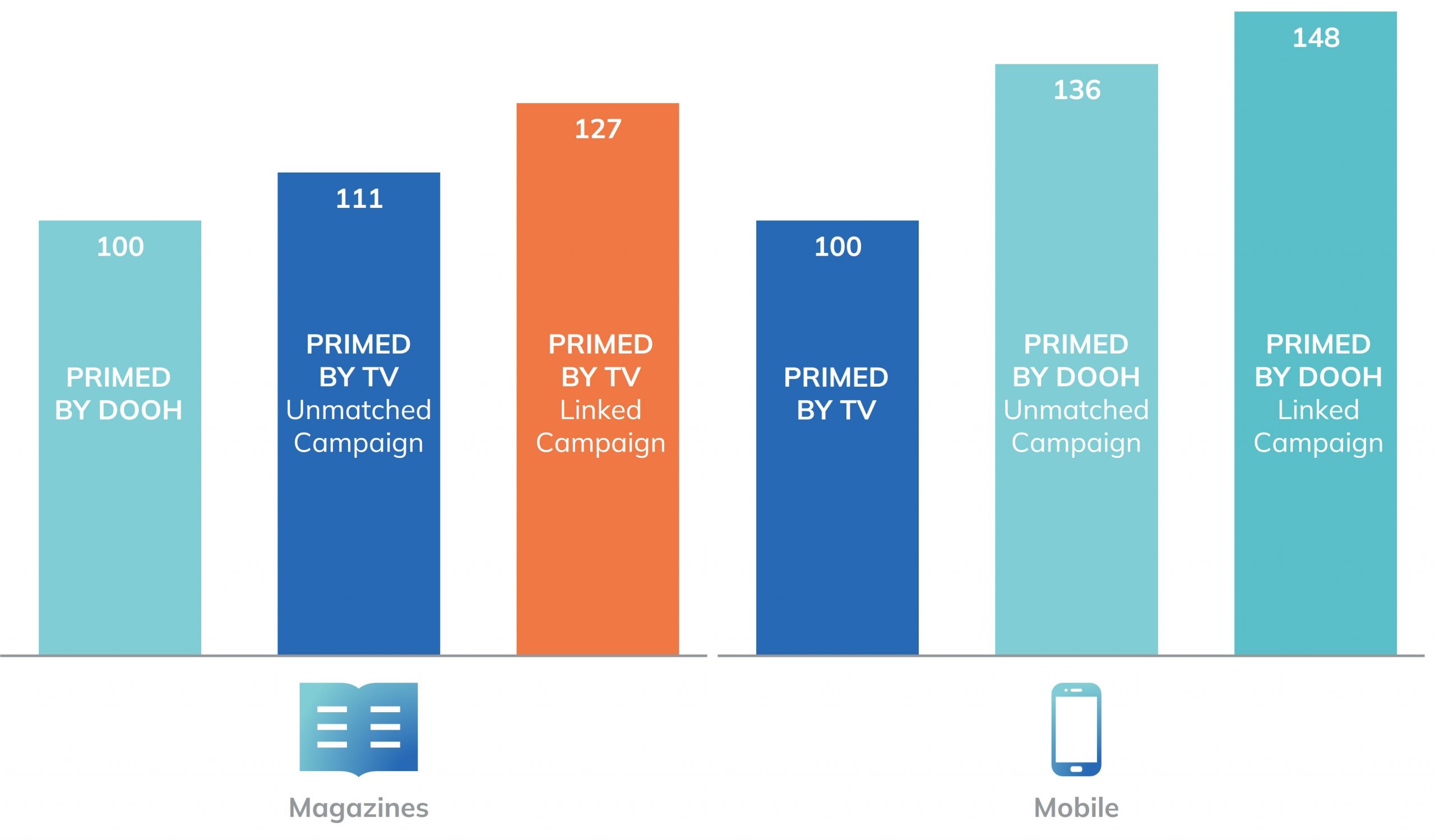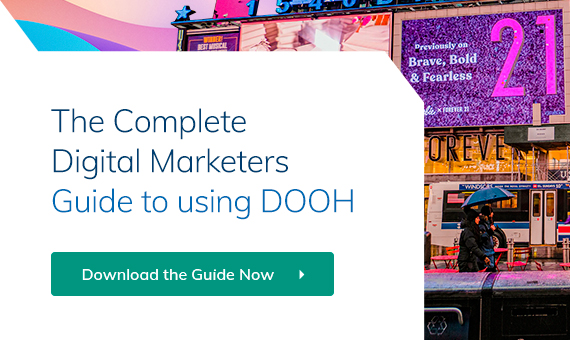Is 2022 the year location-based advertising really takes off for digital OOH?
With a strong 16% growth in 2021 and a further 11% growth anticipated by the end of 2022, out of home advertising is now the second-fastest growing channel after digital media.
New out of home technologies are also starting to dominate, with Digital Out of Home (DOOH) now accounting for over 27% of total OOH revenues and over 30% of total OOH exposure, while programmatic DOOH is predicted to account for 37.1% of total US OOH revenue by 2025.

(Image source: pqmedia.com)
Further figures from the Outdoor Advertising Association of America (OAAA) reveal that:
- 53% of consumers are noticing OOH ads more now than before the pandemic, and increased awareness was highest among adults aged 25-44, high-income earners, and major city residents.
- Recently viewed OOH ads promoting special offers and promotions were reported to be among the most useful for 31% of adults.
- OOH ads are driving consumers to search for more information about advertisers and their products (25%), to visit advertiser’s website (23%), and to share information by word-of-mouth (22%).
- OOH ads are also driving sales, with 21% stating they made a physical purchase, and 20% noting they downloaded an app after seeing a recent OOH ad.
As businesses discover (or rediscover) the mass targeting potential digital Out of Home offers, they’re also figuring out how to integrate it better with other marketing channels to provide a memorable digital campaign experience for customers. In particular, they’re looking for ways to apply geotargeting functionality to digital billboards.
What Is Location Based Marketing?
Location-based marketing allows marketing and advertising teams to target consumers at an individual level based on their location.
Knowing where an audience is and understanding its behavior is key to planning effective DOOH campaigns.
Until fairly recently, location-based marketing has been primarily a mobile marketing strategy. Location-based marketing uses real-time location data to target users based on their proximity to, for example, a store or a local event with hyper-relevant messaging on their mobile device.
However, the technology and anonymized, GDPR compliant mobile location data (plus data from other sources) that enable advertisers to activate advertising on smartphones is now being used to plan and execute location-based audience targeting via other media – particularly DOOH.
GDPR compliant mobile location data allows programmatic DOOH companies to gain a clear picture of where specific audiences are likely to be at any given time. For DOOH advertising, this is crucial for pre-campaign audience identification. With location-based DOOH marketing, a broad audience can become a hyper-targeted and highly engaged audience. With today’s technology, data access and powerful pDOOH platforms, it’s now possible to target specific audiences with outdoor advertising at a granular level.
The high quality and widespread availability of today’s DOOH inventory allows advertisers to utilize an unprecedented level of targeting – not only by audience demographic, behavior and location, but also by time of day and day of the week. Added to this, is the ability to react to external factors such as weather conditions, traffic data and live sporting or news events. Combined, this all amounts to unbeatable opportunities to target your audience with contextually relevant content at the right time, under the right circumstances and in the right location to maximize engagement and brand awareness.
3 Ways Location Based Marketing Can Improve Your Business
Impactful Site and Audience Selection
Place-based media has long been a stalwart of out of home advertising. The idea of targeting customers with contextually relevant content is simple but highly effective.
The increasing proliferation of DOOH inventory means that US consumers are exposed to DOOH advertising for well over an hour per week – and that figure is growing.

(Per capita weekly exposure to digital out of home media in the US. Image source: statista.com)
Using location data, brands can take advantage of these rising exposure rates to map their target audiences against DOOH locations. Identifying the most impactful sites for targeted ads is crucial in the pre-campaign planning stage, as determining which sites to buy and the best time to run ads to reach target audiences means you’re optimizing for the best results.

(Image source: clearchannel.be)
Delivering contextually relevant DOOH content to relevant audiences in relevant locations has been shown to increase ad recall by 17% and direct sales by 16%, according to The Moment of Truth study from Clear Channel, JCDecaux, and Posterscope. This highlights the unique power of relevancy that location based DOOH marketing brings to campaigns, leading to significant uplifts in engagement and conversions.
Omnichannel Opportunities
Advertisers have plenty of opportunities to retarget consumers following exposure to a DOOH ad. By infusing location and mobile intelligence into the DOOH strategy, marketers can not only improve relevancy, but also retarget individuals through other channels.
Once a DOOH advertisement has been run, anonymized location data can be used to identify consumers who were exposed to it. At this point, brands can buy online ad space to retarget the same individuals who saw the DOOH ad.
Using DOOH as a primer for online or mobile retargeting has been shown to be highly effective in a study by Ocean in association with Neuro Insight. It finds that consumers are 48% more likely to click on a mobile ad after being primed by the same ad via a DOOH campaign than they are after seeing a TV ad.

(Image source: oceanoutdoor.com)
Create Big, ‘Wow Factor’ Campaigns
Let’s not forget how effective impactful ad content can be in building and maintaining brand reputation.
The sheer visual impact of DOOH makes it work wonders as a brand awareness tool. Creative use of hyper-local marketing based on a billboard’s surroundings can have a huge impact on customer engagement, even without mobile device integration.
One of the most iconic location-based marketing examples is British Airway’s award-winning proximity marketing campaign, ‘Look Up’. By using geolocation data to track flights over digital billboards, the airline displayed a child pointing upwards to planes flying over, complete with their flight numbers and destination.

(Source: campaignasia.com)
A social media hashtag – #lookup – further encouraged audience engagement with the campaign. The campaign’s creativity and imagination helped cement British Airways’ reputation as a premium national carrier.
Location Based Technology For DOOH: Finding the Right Platform
If you want to incorporate location-based marketing options into your DOOH campaign, buying ad space with a programmatic platform saves time and reduces ad spend.
This is because:
- You bid on inventory instantly and automatically, allowing you to plan reactively and eliminate the need for an ad agency or other third parties.
- You can track campaign metrics in real time, including effective cost per mile (eCPM, or cost per thousand impressions), screen playouts and advertising budget spend.
- You can use location data from mobile technologies to set conditions on your bids. Your ad only appears when your target audience is in proximity to your digital screen, allowing you to target ready-to-buy audiences and maximize ROI.
The Neuron is a programmatic DOOH platform specifically designed for agencies and small businesses. With single-click uploads, an intuitive user interface and real-time metrics, we connect you immediately to digital OOH inventory across the country.

